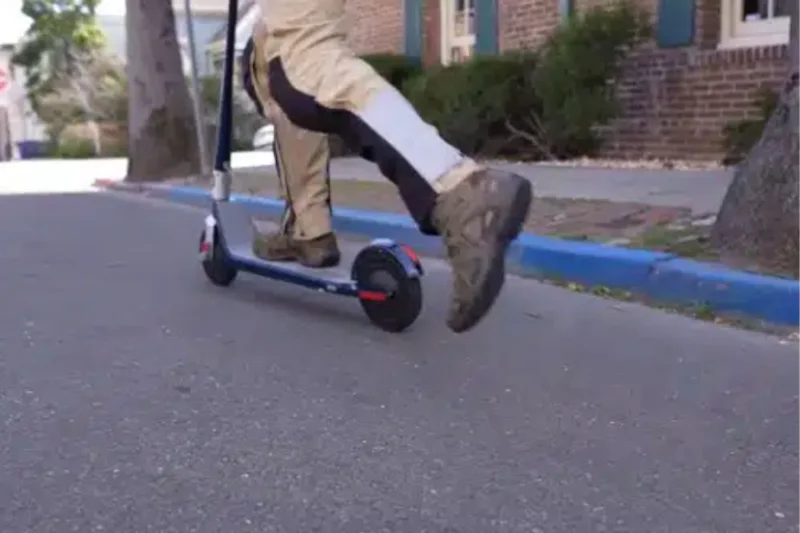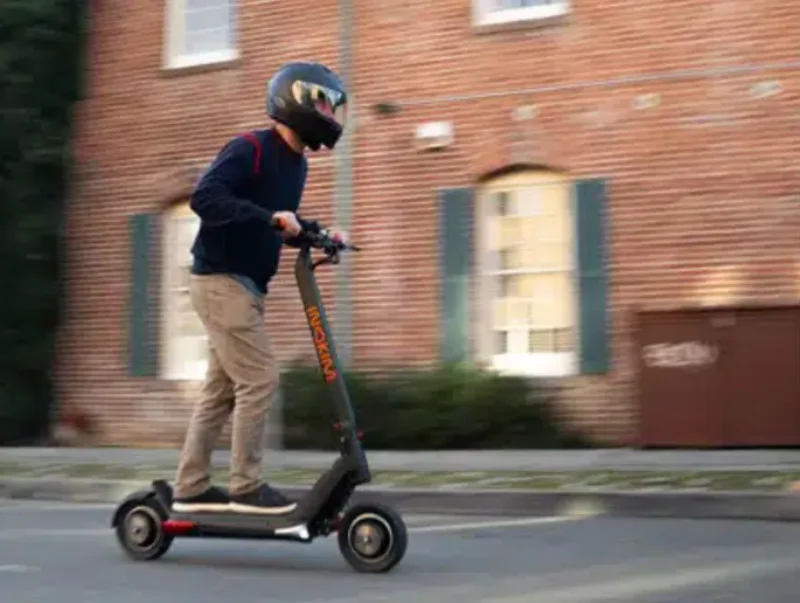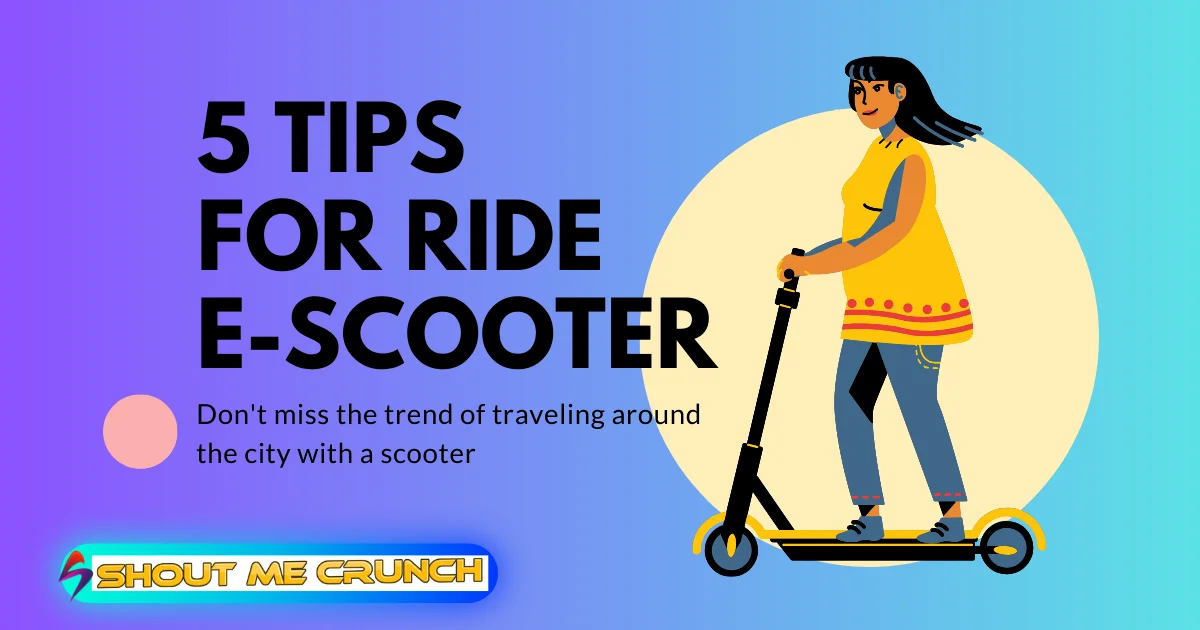Electric scooters, or “e-scooters” as they are frequently called, have exploded onto the urban transportation scene, providing a handy way to zip around congested downtowns. However, first-time riders should approach these sleek vehicles cautiously and prepare to ensure safe and enjoyable rides.
Unlike bicycles with larger wheels and frames, maintaining stability and control on a small e-scooter platform brings unique challenges, especially at faster speeds. Before hitting the bustling streets, new riders should slowly build fundamental handling skills in risk-free settings. Once comfortable with balance and maneuverability, it becomes essential to constantly scan the path ahead for cracks, debris, or uneven pavement that could impact tiny wheels.
This article will explore simple tips for a smooth E-Scooter Ride.
1. Learn Proper Fall and Bail Techniques
No matter how safety-conscious you are, unexpected falls happen. Learning how to fall well can reduce potential injuries from impacts. If you feel yourself losing control, run it out as long as possible, taking small, rapid steps to sustain balance. Crouch low if you must bail, tucking arms tightly and presenting rounded shoulders and back versus unprotected wrists or elbows.
Ensure you attempt to roll diagonally on a large muscle group like your back, thigh, or shoulder instead of stopping a fall abruptly, which risks fracture—slide or skid if possible instead of rag dolling without control. Keep your head protected during the process as well. While falling techniques require practice to become instinctual, knowing some basics can minimize damage if you take a tumble.

Lastly, one of the valuable side benefits of taking up e-scootering is that it provides an excellent opportunity to learn proper techniques for falls and bails. This may seem counterintuitive – shouldn’t the focus be on not falling in the first place? However, loss of control and occasional spills come with the territory, so knowing how best to fall is crucial.
Due to their narrow platforms and small wheels, even careful e-scooter riders are likely to take a tumble now and again. The instability inherent to e-scooters means falls happen more quickly than a regular bike.
This makes them fantastic – albeit unintentional – training tools for learning to fall well. Therefore, choosing the right e-scooter that suits your needs will go a long way in helping you learn various techniques. Look for trusted brands, speed, ratings, and price classes of the e-scooters.
2. Practice Handling Basics in Safe Environments
For new e-scooter riders, start slowly in vast open areas like empty parking lots accessible from traffic, pedestrians, and obstacles. Smooth asphalt areas work best before venturing into actual riding conditions. Practice fundamentals like balancing, speed control, turning, braking, and shifting body weight without distractions first.
Selecting the appropriate route can make a significant difference in your e-scooter experience. Identify scooter-friendly paths and dedicated lanes in your city. Many urban areas have recognized the need for specific spaces for micro-mobility devices, making it easier for riders to navigate without interference from heavy traffic.

Avoid congested streets and high-traffic areas, as they can compromise your safety and your ride’s efficiency. Instead, opt for bike lanes or designated scooter zones where available. Planning your route and using navigation apps that consider scooter-friendly paths will contribute to a more pleasant and hassle-free journey.
3. Invest in Protective Gear
The number one rule for safe riding is wearing a properly fitting helmet designed specifically for e-scooters. Unlike bike helmets, e-scooter helmets fully protect the back of the head, which is highly vulnerable during falls. When adequately strapped, the helmet should stay secure without rocking back and forth on your head. Certified helmets meet safety standards based on impact absorption tests. Always opt for the most protective and high-visibility gear you can afford.
Wrist guards also safeguard against scrapes and fractures during tumbles and sudden stops. Search for wrist guards with rigid splints versus fabric wraps for best shock absorption. Slide-on versions make it quick and easy to put them on.
While less crucial kneepads and elbow pads add a layer of defense over commonly skinned areas during minor falls, opt for lightweight padding that won’t restrict movement. Hard shell knee and elbow caps offer even more robust impact deflection.

4. Scan Surfaces and Anticipate Hazards
E-scooter wheels are small, so cracks, rocks, road debris, potholes, and uneven surfaces can impact handling or cause wipeouts, especially at higher speeds. Scan at least 10-20 feet ahead of you so you can proactively react to obstacles in your path. When possible, approach bumps and cracks head-on rather than at angles that can catch wheels. Stand with bent knees and hover low over the platform when you must traverse uneven terrain to allow your legs to absorb shocks better. Uneven sidewalks and paving stones require extra vigilance and speed adjustments.
Wet roads, painted lines, metal sewer grates, and leaves or sand should all be considered slick surfaces to cross cautiously, even when flat. Sudden braking or turning on slippery terrain risks losing control or adhesion. Identify risks early and reduce speed in questionable areas. Night-time riding requires even greater alertness to unexpected conditions, only visible close-ups. When in doubt, disembark and walk e-scooters across extra hazardous patches.
5. Respect Traffic Laws and Be Predictable
While thrilling to ride, e-scooters are considered vehicles in most regions and are subject to standard traffic laws like obeying signs, signals, lane markings, and speed limits. Ride in the same direction as traffic every time a designated bike lane isn’t available. Use clear hand signals when turning and come to complete stops at intersections, allowing pedestrians to cross first.

Avoid sudden swerving or crossing multiple lanes, which can surprise motorists. Make eye contact with drivers to confirm they see you before crossing and understand your intentions using signals. Be extremely cautious at multi-lane intersections where vehicles may fail to notice you off to the sides. Defensive and predictable riding prevents most collisions with cars.
Conclusion
Riding an e-scooter opens convenient local transportation possibilities. However, mastering balance, control, and hazard avoidance takes some initial practice before venturing out, especially if you are new to these zippy vehicles.
Follow these tips on gearing up with protection, honing handling in safe places first, scanning terrain ahead, obeying traffic laws, and learning proper fall techniques in case the unavoidable occurs. With some preparation, your e-scooter can provide exhilarating mobility while minimizing risks!


